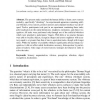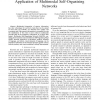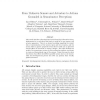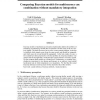64 search results - page 2 / 13 » Sensory Modality Segregation |
HAPTICS
2010
IEEE
13 years 4 months ago
2010
IEEE
The present study examined the human ability to learn a new sensory modality, specifically "whisking". An experimental apparatus containing artificial whiskers, force sen...
IJCNN
2006
IEEE
14 years 1 months ago
2006
IEEE
— Multimodal integration of sensory information has clear advantages for survival: events that can be sensed in more than one modality are detected more quickly and accurately, a...
JFR
2006
13 years 7 months ago
2006
We derive categories directly from robot sensor data to address the symbol grounding problem. Unlike model-based approaches where human intuitive correspondences are sought betwee...
CONNECTION
2006
13 years 7 months ago
2006
This article describes a developmental system based on information theory implemented on a real robot that learns a model of its own sensory and actuator apparatus. There is no in...
NIPS
2007
13 years 9 months ago
2007
Bayesian models of multisensory perception traditionally address the problem of estimating an underlying variable that is assumed to be the cause of the two sensory signals. The b...




